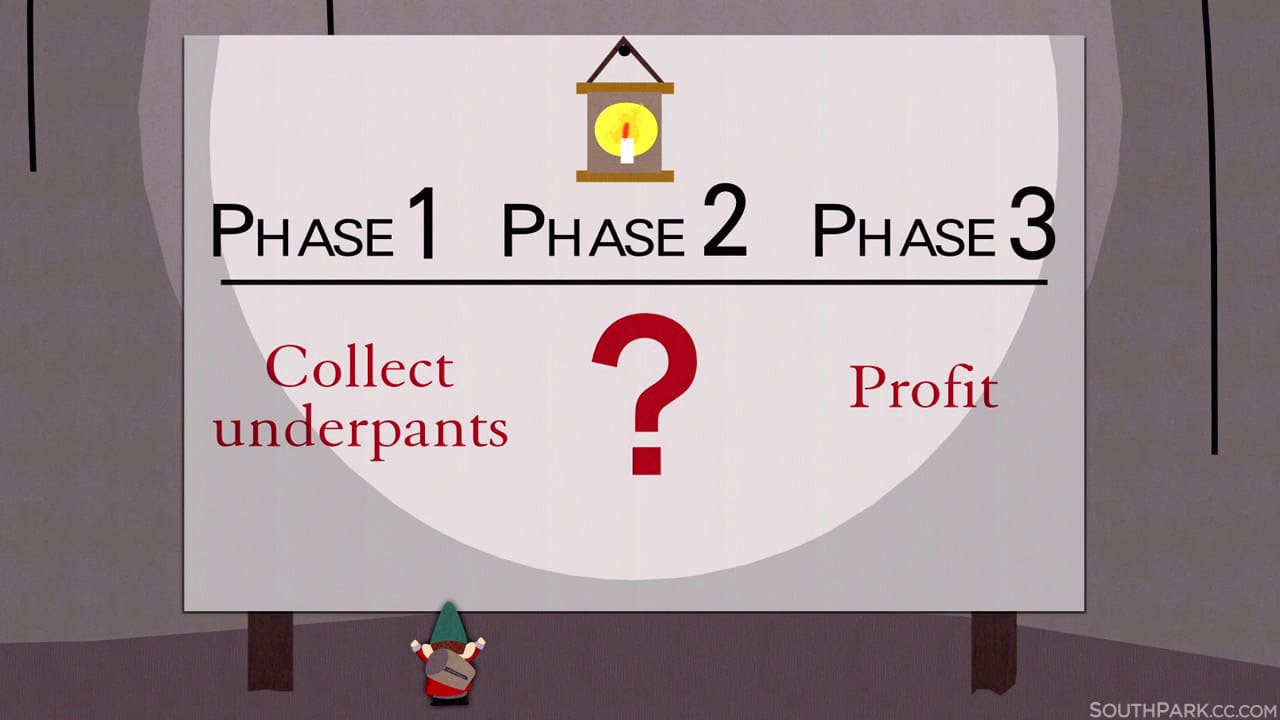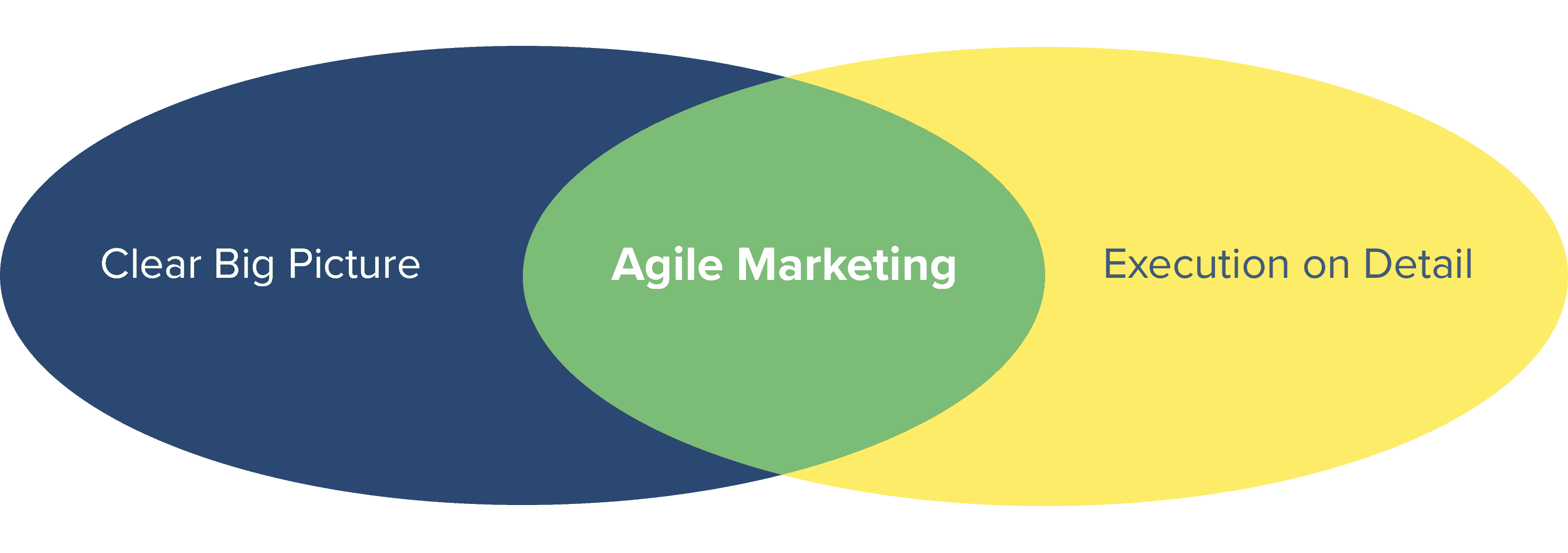Your marketing won’t work if you can’t balance the big picture with the grind.
Success requires painting the big picture accurately and executing on the details with dedication. You need to step back to set the right marketing goals, but then step in to focus on the granular elements of making them happen. Both sides of the continuum are critical, but they can feel mutually exclusive.
Here’s what that means – and why it means you need to use an agile marketing approach.
When you over-focus on the big picture, you get big ideas with little follow-through.
Honestly, this is the side of the continuum that I tend to err on. I get pumped to set big picture goals, but too often I can gloss over the details of execution. There are two main mistakes you can make on this side of the continuum:
1. You have big goals but an incomplete plan to make them happen. That’s what leads to charts like this:

The goal sounds good, but the details of execution leave something to be desired. Sadly, if your company doesn’t plan how to execute on your goals, you’re doing little more than extended daydreaming.
Most often, this happens because goals weren’t SMART to begin with, making planning difficult. An incomplete plan is often the result of an abstract goal, like “Profit” or “Do great on Twitter”. The unfortunate truth is that these kinds of goals and plans are created more often than we’d like to admit.
2. You have great goals and a comprehensive plan, but you don’t execute. You’ve made SMART goals and you’ve thought through the process of execution – but you didn’t reach your goal because execution became impossible or you didn’t follow through. This can be especially disappointing, because if you take the time to plan execution and then don’t reach results, failure feels more tangible. You can usually see exactly where you ran into roadblocks.
Sometimes, this will happen due to factors outside of your control. More often, it will happen because somewhere along the way you stopped properly prioritizing your goal.
When you over-focus on execution, you get activity without alignment.
On the flip side, some companies can emphasize execution to the detriment of big-picture strategy. This is the side of the continuum that (over)achievers tend to err on, and it’s one of the main causes for marketing activity that doesn’t actually impact results. There are two mistakes you can make on this side:
1. You do work hard but you don’t set goals. Sure, a good work ethic is admirable, but if it’s not aligned to a purpose it’s useless. This is the equivalent to running a race without any idea of where the finish line is – you’ll always be beaten by the person who knows where they’re going, even if that person walks.
We’ve seen companies churn out hundreds of blogs a month without stopping to consider whether they were choosing the right topics. We’ve seen firms push for massive social media campaigns without stopping to consider who they’re trying to reach.
It’s not good.
2. You don’t notice when the right goals become the wrong goals. This is probably the most difficult scenario to prevent against. The world moves fast, and you need to be constantly assessing your marketing goals to ensure that they stay relevant. If you go heads-down on execution and the context around you shifts, you’ll miss out on opportunities for success when the right goals become the wrong goals.
For example: Facebook had a rough 2018. If you set a Facebook goal last year for page likes and then went heads-down to achieve it, you could’ve missed out on other opportunities as the social media giant struggled and other platforms gained prominence. It’s important to build in regular feedback loops to ensure that your goals are consistently relevant to your success.
How agile marketing balances the big picture with execution:
It’s hard to balance big-picture thinking with detail-oriented execution; we’re limited humans, and it’s far easier to focus on one side of the continuum than it is to hold both sides in perspective at all times.
Fortunately, there’s an approach that helps. We call it agile marketing.
You’re probably familiar with the term “agile” – it’s become something of a buzzword in manufacturing and tech since its inception in 2001. But let’s cut through some of the buzz and unpack what we really mean by agile. Here’s the gist:
- Individuals and interactions over processes and tools
- What works over comprehensive documentation
- Customer collaboration over contract negotiation
- Responding to change over following a plan
Basically, we assess what our goal should be, ideate possible solutions for the goal, and execute to make it happen – all on a short feedback loop so that we never run too far in the wrong direction.
There’s a focus on the big picture, but there’s a balance with consistent execution.

Want to learn more about agile marketing?
Our agile marketing approach relies on a unique cadence and proven processes that allow us to make sure we’re setting the right goals and consistently executing them to success.
Want to learn more about how it works? Want to make sure you’ve got the right goals and tactics in place? Want to make sure you’re not making the classic gnome mistake?
We’re here to help. Let’s talk.






